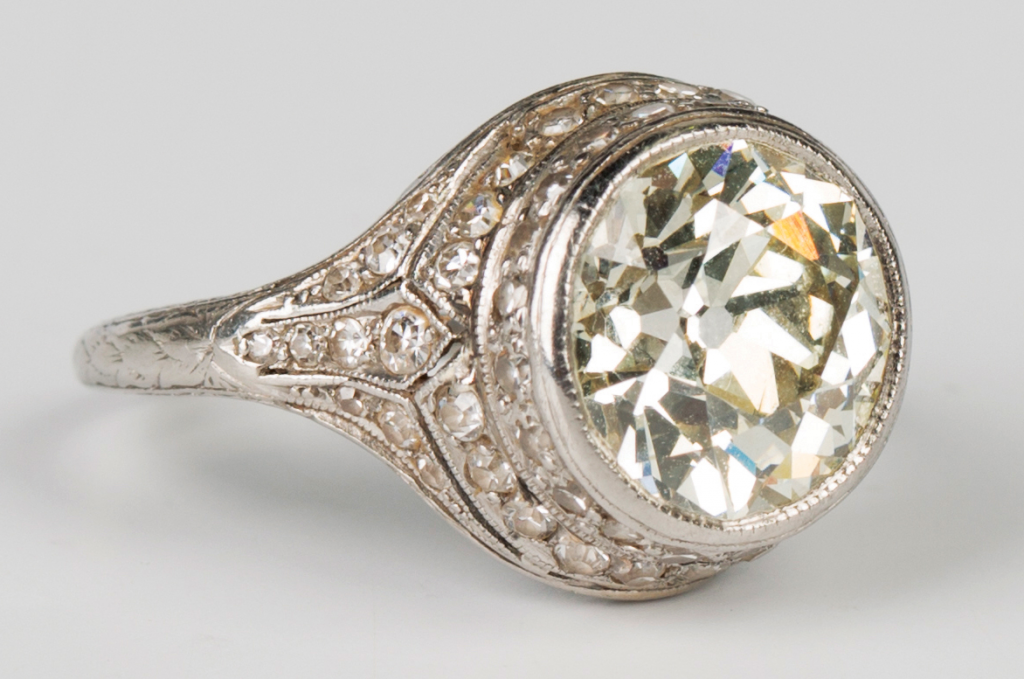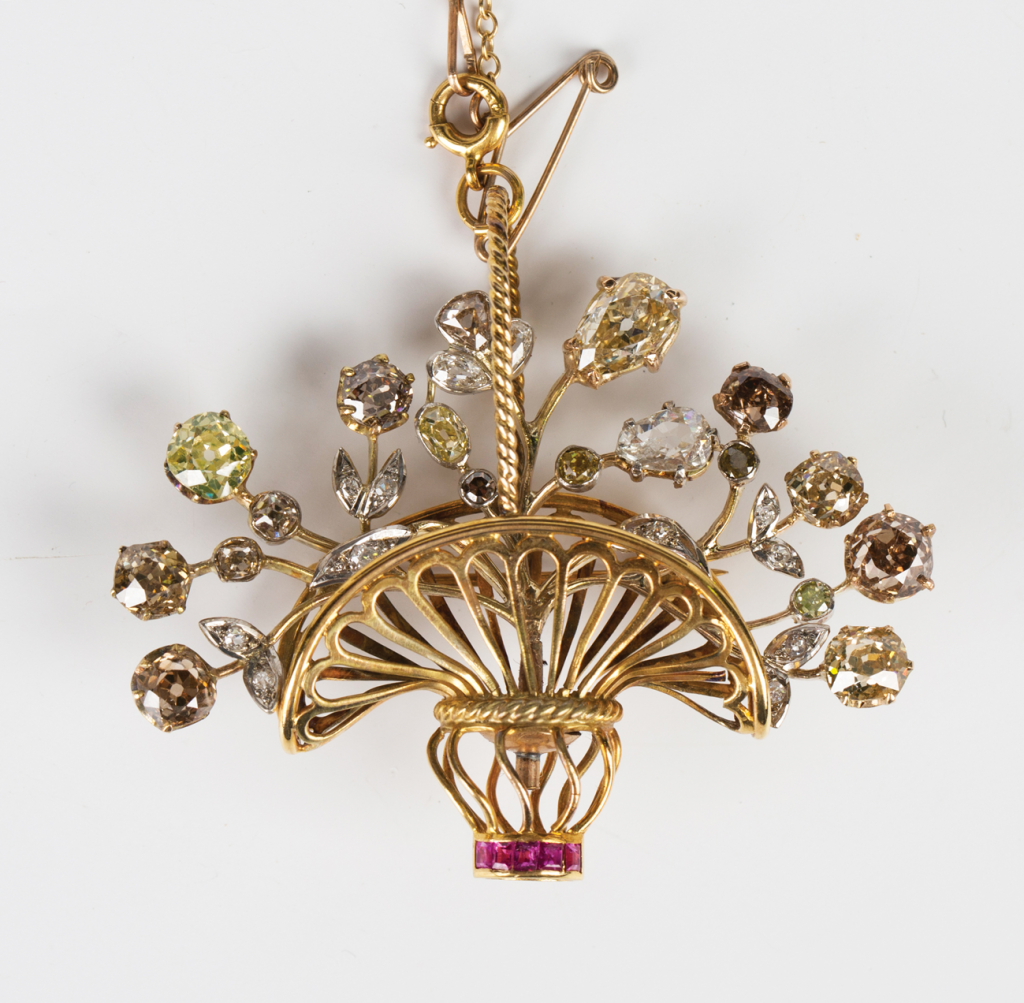
Over millennia jewellery has held a fascination for humankind bringing together timeless gems, the skill of the craftsman and the beauty of the jewel. Jewellery often marks important moments in our lives and the procession of history. It evolves to the delight of successive generations.
Jewellery designs from earlier periods have always been reinterpreted and adapted over the centuries with collectors prepared to pay a premium for original pieces. Alongside date and the quality of the stones the essential ingredients are the eye of the designer and the skill of the maker.
In the first decades of the 21st century mainstream taste has gravitated towards restrained clean lines.
These same qualities can be found in the Art Deco. Art Deco was a fashionable style in the inter-war years of the 20th century. It co-existed with machine age styles and modernism with clean lines and geometric designs in contrast to the Art Nouveau which preceded it.
The platinum ring you see here is a beautiful example of period, Art Deco jewellery. It dates from around 1925. It is collet set with a 3.5 carat old cut cushioned shaped principal diamond within a surround of smaller cushion shaped diamonds. It was sold at Toovey’s for £10,000.

Today there is also an interest in older antique styles like the delicate, gold, diamond and ruby brooch illustrated. The brooch dates from the late 19th century. Designed as a flower filled basket it is set with variously cut, vari-coloured diamond flowers and a band of calibre cut rubies. Just over 2 inches wide it made £3000 at Toovey’s.
The late Victorian period was characterized by fashionable women reacting against the technical progress in the mechanised production of jewellery for the masses, and the excess decoration of high Victorian designs. Their tastes favoured delicate jewels with understated fine gems and diamonds. Naturalistic designs like this remained popular from the 1840s onwards. Bees, insects and flowers were popular motifs.
In contrast to the earlier corsets and crinolines from the 1890s women’s fashion sought to enhance rather than alter the wearer’s figure employing softer materials. As a consequence brooches, like the flower filled basket, became smaller and lighter.
As these two contrasting pieces demonstrate it is not always just the stones that make a piece valuable. The setting, date and design can be as important. Provenance too influences price. If a jewel has been owned by a respected collector or celebrity it will often add value.
Jewellery at its best adds to the beauty of the wearer and speaks across generations of love and precious moments in our human lives. The appeal of jewellery is timeless.